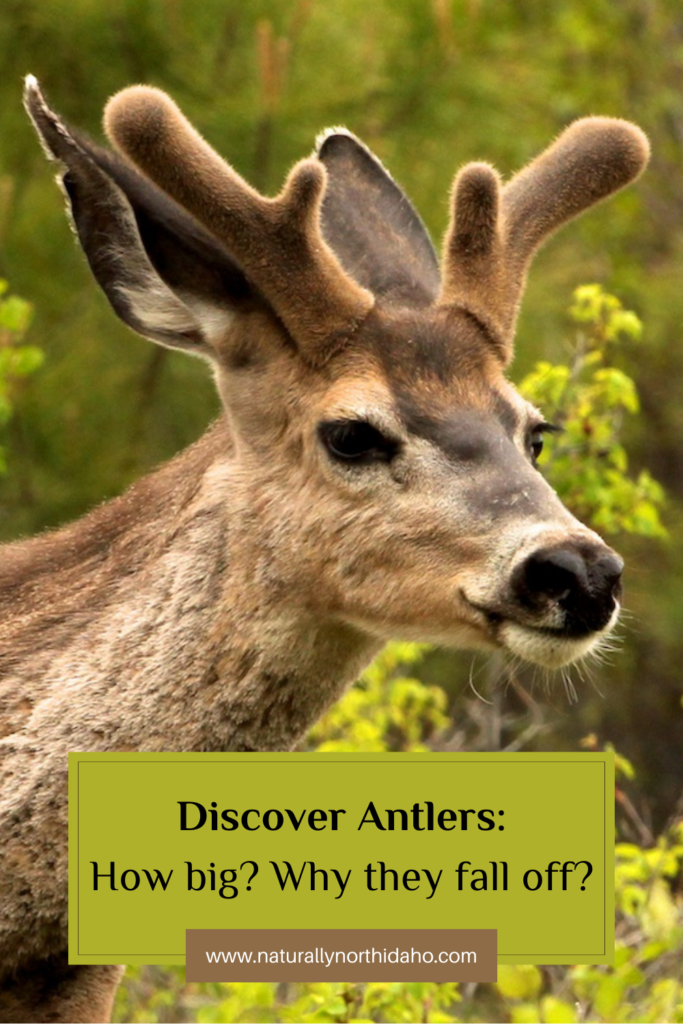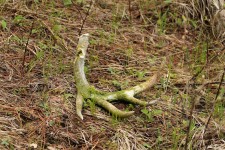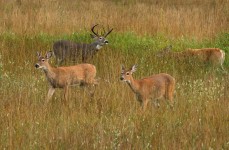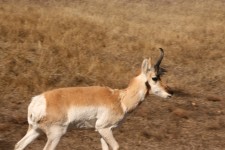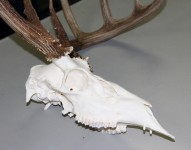A big bull moose can grow an eighty pound rack over the summer, adding up to a pound of bone a day!
Antlers grow at incredible rates in just a few month, sometimes up to an inch a day which makes antlers one of the fastest growing living tissues.
Every year male deer, moose and elk grow antlers while both male and female caribou grow them. Antlers are shed every year whereas horns are permanent.
Antlers grow from two bone cores on the top of the skull. The growing antlers are covered by skin and velvet (a fuzzy, dense fur) which has an ample blood supply and a large concentration of nerves.
The blood vessels in the velvet bring essential nutrients to the growing bone, such as calcium. An animal cannot eat all of the calcium it needs during the summer to keep up with the antler growth. Therefore, the animal stores calcium in its bones throughout the year in order to meet the demand of the growing antlers.
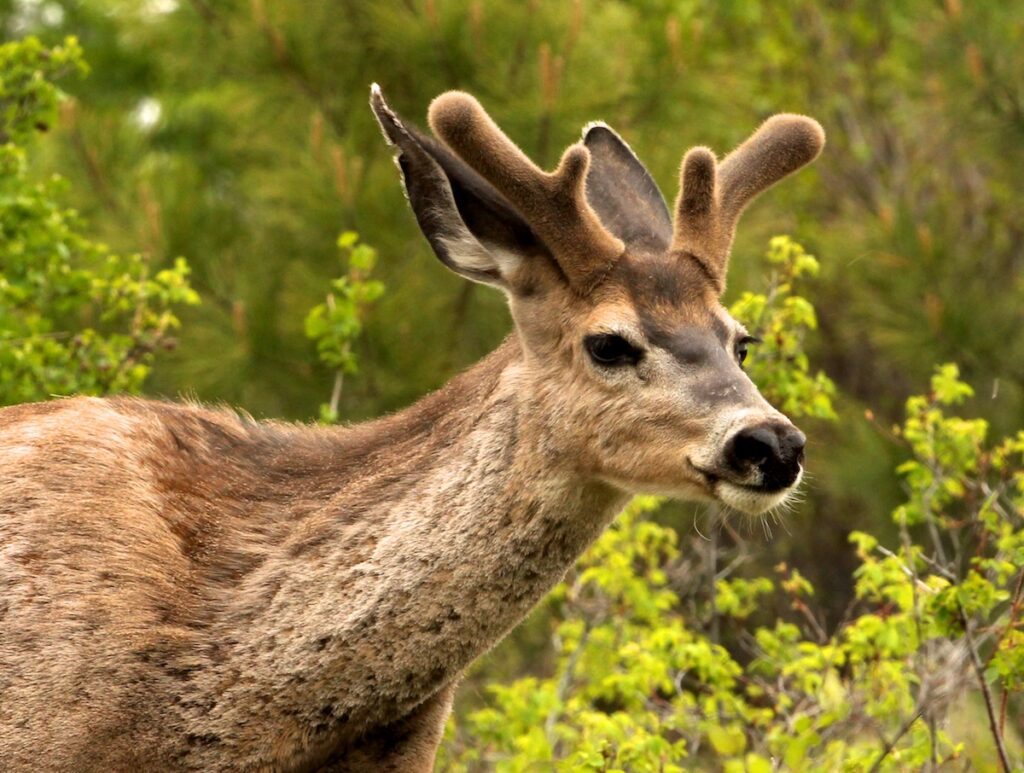
How big do antlers grow?
One of the factors for the size of antlers is the mineral resources available to the animals. If there are not adequate supplies of calcium, the antlers will be smaller. A high quality habitat enables animals to grow heavier antlers because good mineralization occurs within the bone. Deer antlers can weigh up to 9 pounds, elk antlers up to 20 pounds each and moose antlers up to 40 pounds each.
Another factor is age. Antlers typically grow larger every year until the maximum size is reached and then they grow smaller. Deer grow prime antlers from 4 to 6 years, elk from 9 and 12 years, and moose from 5 to 10 years.
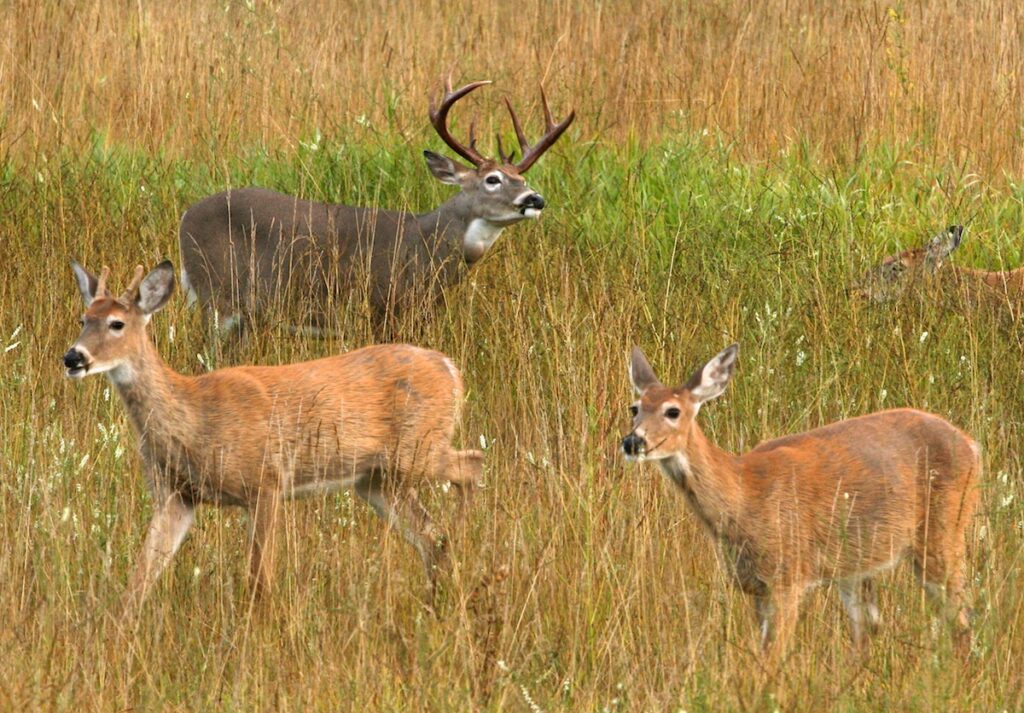
What causes antlers to grow?
The annual cycle of antler growth is regulated by the length of daylight. In the spring the pineal gland in a deer’s brain reacts to increasing daylight by increasing production of testosterone.
The increase in testosterone triggers antler growth and neck muscle growth (in order to support the added weight of antlers).
Growing antlers are delicate and sensitive to the touch. Deer try to avoid bumping their antlers against anything because they can be damaged. If a growing antler is injured, it may become permanently misshapen.
Unusual racks can also be caused by genetics or by an injury to another bone in the body. If a buck injures its leg, the antler on the opposite side may be affected.
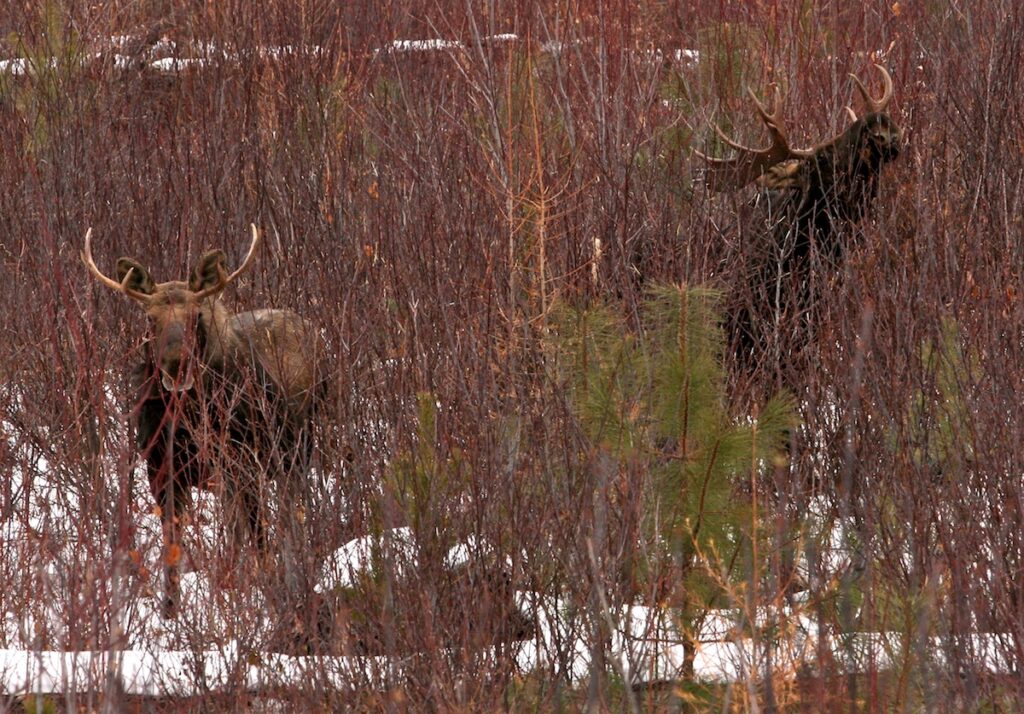
Why do antlers fall off?
Antlers are mainly used for establishing male dominance and for showing females the male’s overall quality. Mating occurs in the fall, so antlers are not needed after the rut. The antlers fall off mid-winter to spring.
Once antlers reach their predetermined size, the blood vessels at the base of the antler close down which causes the velvet to dry up. The animal then rubs off the velvet on branches or tree trunks and frequently eats the velvet.
Before an animal sheds its antlers in winter or early spring, the animal draws calcium back into its body, leaving the antlers more brittle and porous.
As day length decreases, testosterone levels decrease, initiating a specialized layer of cells at the base of the antler. These cells form a small cavity that allows the antlers to fall off.
With that small cavity, the slightest movement or bump can cause the antlers to fall off. I’ve seen two antlers side-by-side on the ground as if the deer lowered its head to eat and both antlers just fell right off.
Sometimes, the antlers are not synchronized. A deer may be sporting only one antler after the first one has fallen off.
The cycle starts all over again in the spring when velvet-covered nubbins start forming at incredible rates.
For more information on deer antlers, the MSU Deer Ecology and Management Lab has a wealth of information.

